Ventures
Joint Labs
At CSMB, we work closely with a range of partners through joint labs to foster collaborative research.
These partnerships allow us to combine expertise, resources, and technology in a focused effort to address key challenges in material science. By sharing knowledge and working together, we aim to contribute to meaningful advancements in our areas of study.
JRL Cat
Joint Research Laboratory for Catalysis
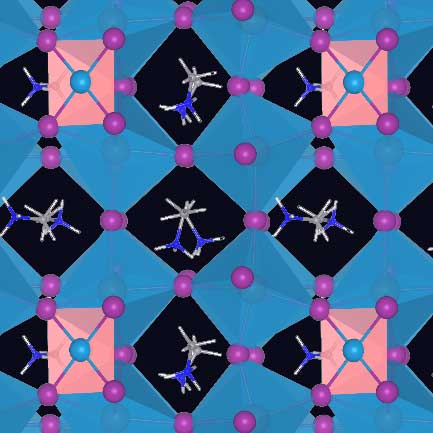 In order to make our energy system CO2-neutral, the production of green hydrogen and its further processing into basic chemicals and synthetic fuels on an industrial global scale is absolutely necessary. However, such a hydrogen economy can only be achieved with innovative leaps in synthetic chemistry. Novel catalysts and catalytic processes are the key.
In order to make our energy system CO2-neutral, the production of green hydrogen and its further processing into basic chemicals and synthetic fuels on an industrial global scale is absolutely necessary. However, such a hydrogen economy can only be achieved with innovative leaps in synthetic chemistry. Novel catalysts and catalytic processes are the key.
The Helmholtz-Zentrum Berlin (HZB) and Humboldt-Universität zu Berlin (HU) have partnered to establish a cutting-edge catalysis laboratory within our research building in Adlershof. We provide ideal conditions for advancing research on catalysts, essential for sustainable technologies like “green” hydrogen production.
This collaboration fosters interdisciplinary innovation, leveraging thin-film technologies, additive manufacturing, and nanostructuring methods to develop energy materials. With its unique setup and focus on integration, CSMB strengthens Berlin’s position as a leader in catalysis research.
Partner:
 (
(  ,
,  ,
, 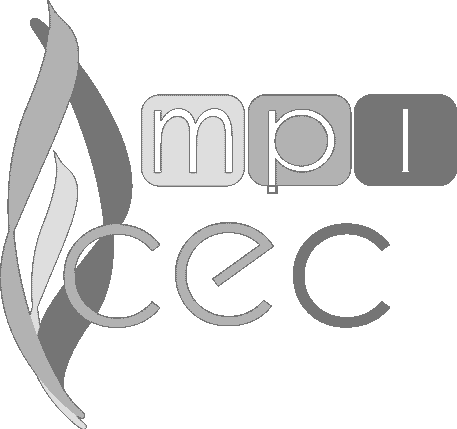 )
)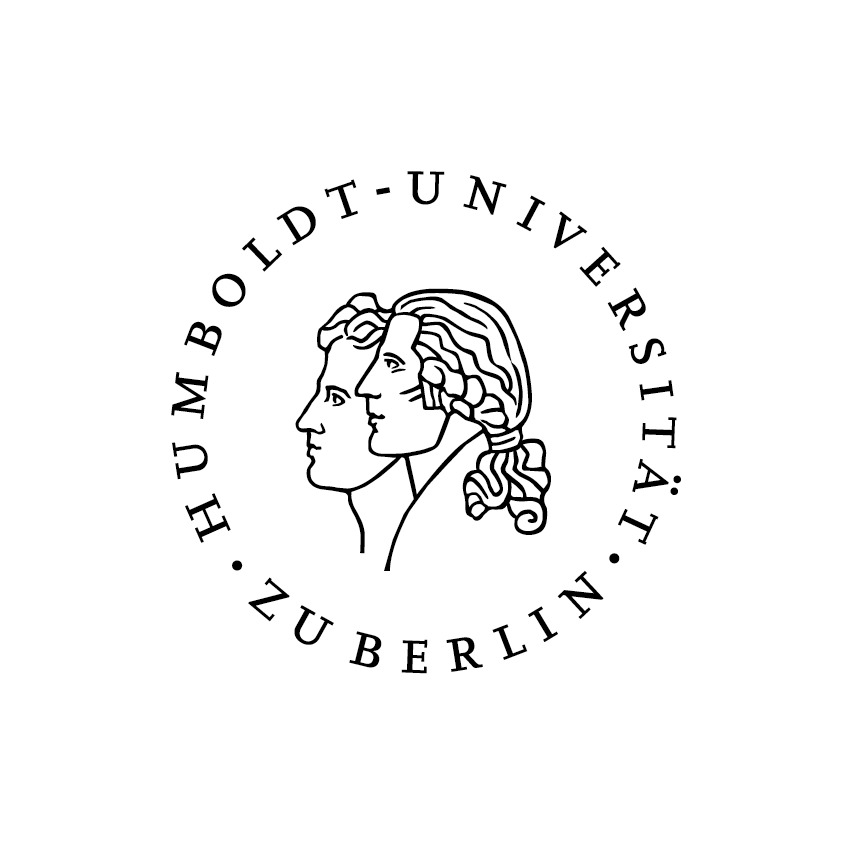
CatLab (HZB, FHI, MPI CEC), HU-Berlin
Coordination:
Dr. Steffi Hlawenka
JAMA
Joint Laboratory for Advanced Magneto-Transport Adlershof
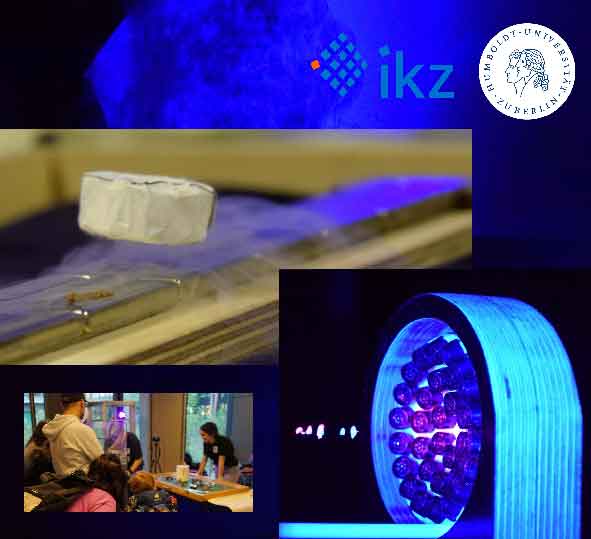
The Joint Laboratory for Advanced Magneto-Transport is a facility of the Leibniz-Institut für Kristallzüchtung and the Humboldt-Universität zu Berlin. It combines the excellent equipment and complementary scientific expertise of both institutions to provide state-of-the-art high magnetic field and low temperature infrastructure for solid state physics and materials science research and to make it available to both institutions and their partners with the aim of investigating modern electronic materials and materials, in particular nano- and quantum structures in the field of electronics and photonics.
JAMA celebrated its opening on January 29, 2025. Here some impressions from the event.
Partner:


IKZ, HU Berlin (CSMB & Dept.Phys.)
Scientific Coordination:
Prof. Dr. Saskia F. Fischer (HU Berlin)
Dr. Andreas Fiedler (IKZ)
GenFab
Generative manufacturing processes for hybrid components
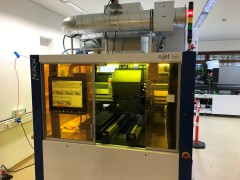 Since August 2018, the HZB-group of Prof. Eva Unger and the group of Prof. Dr. Emil List-Kratochvil from the Humboldt-Universität zu Berlin, have cooperated on the long-term project “Generative manufacturing processes for hybrid components” (GenFab).
Since August 2018, the HZB-group of Prof. Eva Unger and the group of Prof. Dr. Emil List-Kratochvil from the Humboldt-Universität zu Berlin, have cooperated on the long-term project “Generative manufacturing processes for hybrid components” (GenFab).
They develop large scale (opto)electronic devices, printed solar cells and components fabricated by printing and solution-based methods from hybrid materials: from transparent conductive electrodes to memory devices, transistors, light-emitting diodes, solar cells and sensor applications.
To enforce the synergy between their research groups, they decided to establish a new jointly used lab space for GenFab based in the CSMB research building.
Partner:


HZB (HySprint), HU Berlin
Deputy Head:
Dr. Felix Hermerschmidt
LayerTransfer
Joint Laboratory for layer transfer for 2D-heterostructures
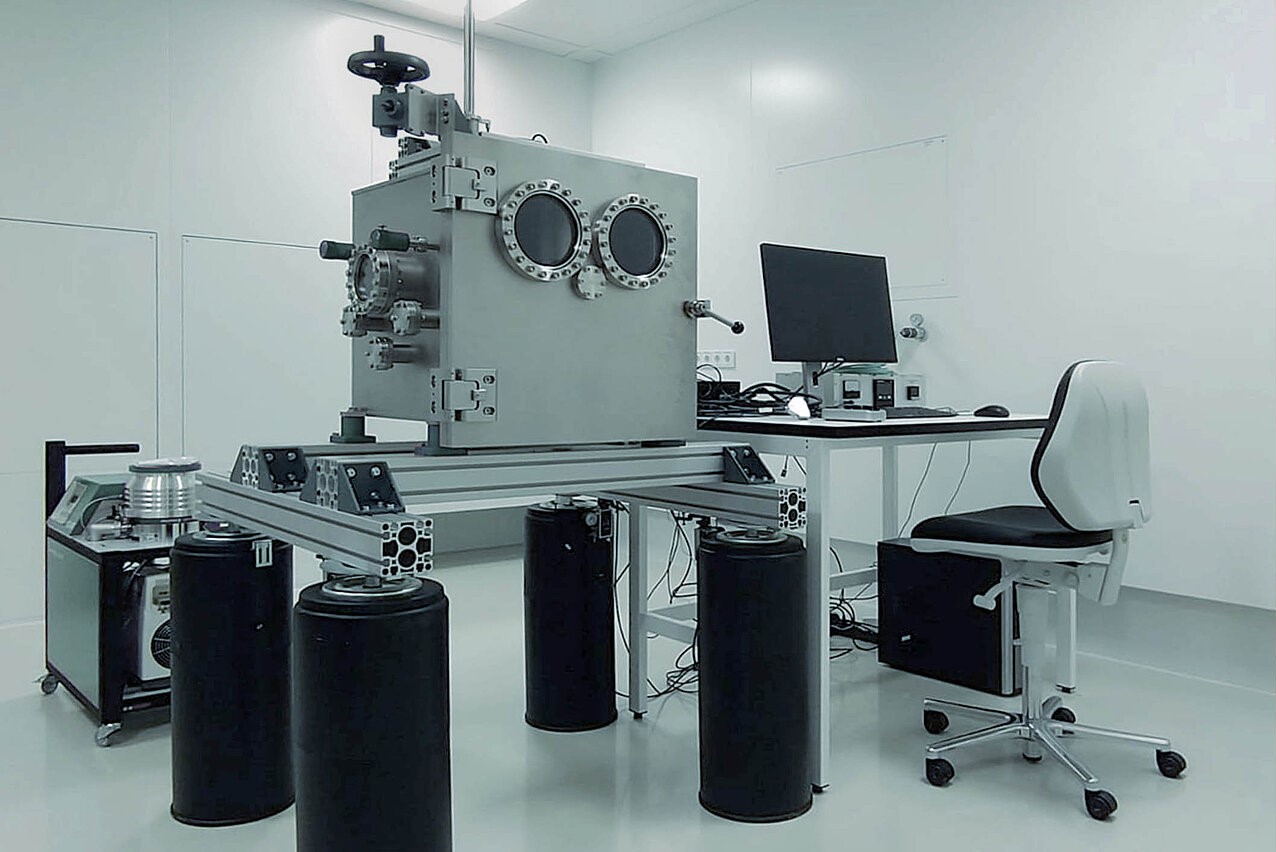
The development of functional quantum materials is a high-priority challenge in material science. 2D materials, in particular, offer great potential, but their full functionality is unlocked through novel heterostructures. The strategic cooperation “Layer transfer for 2D-heterostructures” aims to achieve this. Layer transfer allows combining crystalline materials without limitations like lattice mismatch or crystal symmetry, enabling the creation of innovative heterostructures. For 2D crystals like graphene, TMDC, or hBN, material properties can be tailored by stacking order and orientation. This new “bottom-up” method is key to advancing quantum materials and material sovereignty in Berlin.
A successful cooperation is promised by the complementary expertise of the Layer Transfer working group of Dr. Martin and the AG HYD of CSMB-member Prof. List-Kratochvil, which offers natural synergy effects and an ideal basis for scientific exchange and the development of new research projects.
Partner:


IKZ, HU Berlin
Coordination:
PD Dr. Sylke Blumstengel (HU Berlin)
Dr. Jens Martin (IKZ)
JL-2DSES
Joint Laboratory for Novel 2D Materials Synthesis and Electron Spectroscopy
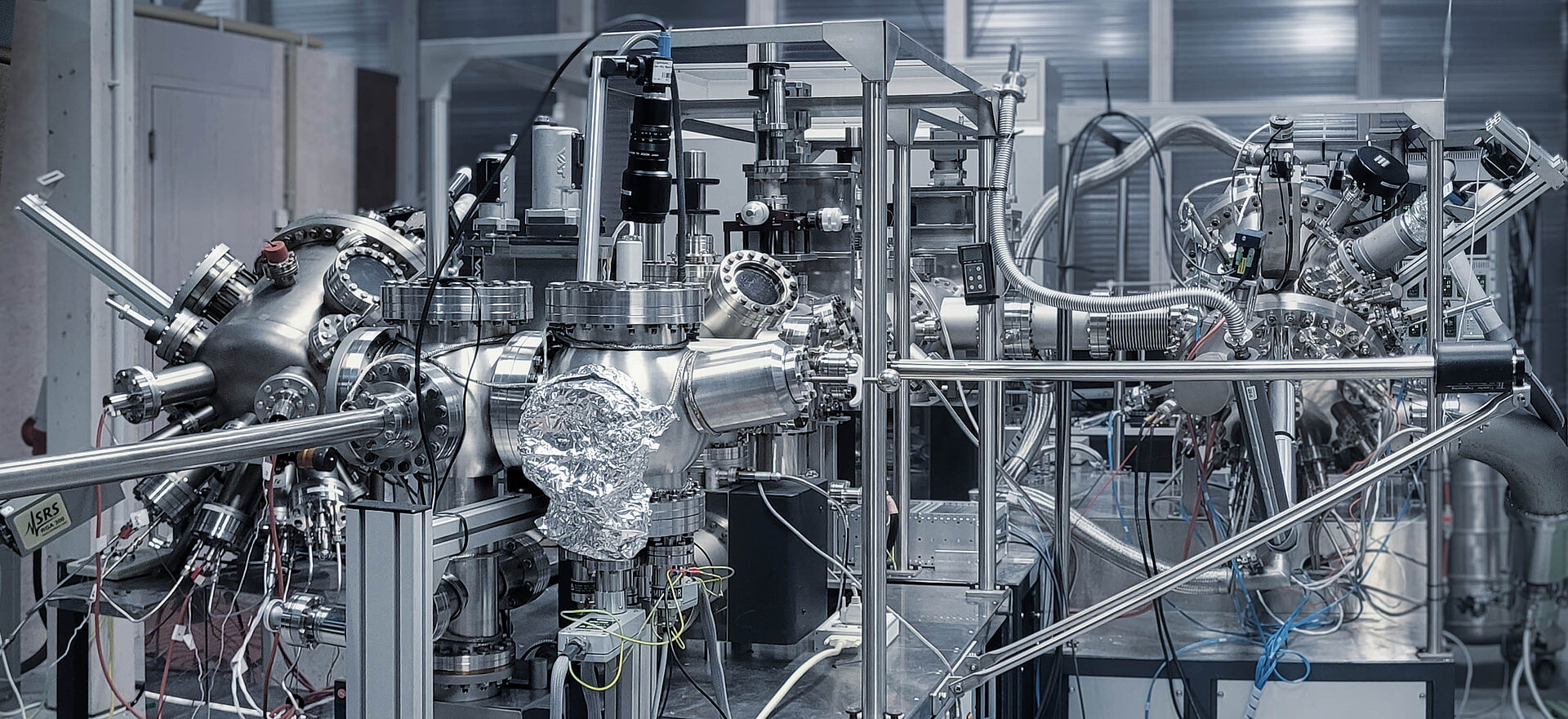
To foster the longstanding collaboration between the Leibniz-Institut für Kristallzüchtung (IKZ) and Prof. Dr. Norbert Koch, Humboldt-Universität zu Berlin, both set up the ‘Joint Laboratory for Novel 2D Materials Synthesis and Electron Spectroscopy – JL-2DSES’ on the Adlershof campus in 2024. The aim of JL-2DSES is to provide state-of-the-art materials synthesis and electron spectroscopy infrastructure for solid-state physics and materials science on novel two-dimensional (2D) materials. The focus lies on molecular beam epitaxy (MBE) for the generation of extremely thin crystalline (hetero)structures and photoelectron spectroscopy (PES) as a surface-sensitive method of chemical and band structure analysis.
The JL-2DSES offers a unique research environment for university and non-university research institutions on the Adlershof campus and in Berlin. In addition to the opportunity to cooperate with partners in the field of materials and device production, new perspectives for interdisciplinary approaches to materials synthesis and characterization emerge. The JL-2DSES is intended to be a point of contact for scientific institutions and industry for questions relating to the electron spectroscopy of modern electronic materials, particularly in the fields of electronics, optoelectronics and photonics, as well as the synthesis of 2D materials. JL-2DSES is designed for the long term with the intention to coordinate in the best possible way the complementary human and material resources available to the IKZ and the HU while generating synergies for research, teaching and training.
Partner:


IKZ, HU Berlin
Coordination:
Prof. Dr. Norbert Koch (HU Berlin)
JRL Cat
Joint Research Laboratory for Catalysis
 The Helmholtz-Zentrum Berlin (HZB) and Humboldt-Universität zu Berlin (HU) have partnered to establish a cutting-edge catalysis laboratory within our research building in Adlershof. We provide ideal conditions for advancing research on catalysts, essential for sustainable technologies like “green” hydrogen production.
The Helmholtz-Zentrum Berlin (HZB) and Humboldt-Universität zu Berlin (HU) have partnered to establish a cutting-edge catalysis laboratory within our research building in Adlershof. We provide ideal conditions for advancing research on catalysts, essential for sustainable technologies like “green” hydrogen production.
This collaboration fosters interdisciplinary innovation, leveraging thin-film technologies, additive manufacturing, and nanostructuring methods to develop energy materials. With its unique setup and focus on integration, CSMB strengthens Berlin’s position as a leader in catalysis research.
HySPRINT
Hybrid Silicon Perovskite Research, Integration & Novel Technologies
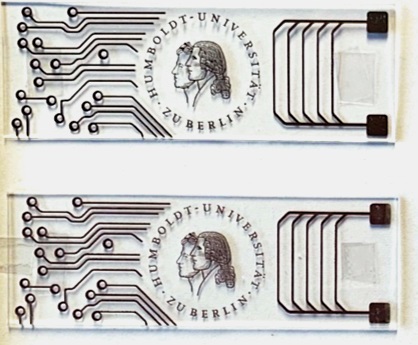 HySPRINT is a cooperation platform for industry with a focus on (opto)electronic materials and devices at an early technological stage of development.
HySPRINT is a cooperation platform for industry with a focus on (opto)electronic materials and devices at an early technological stage of development.
Notable achievements include the development of record-breaking perovskite/silicon tandem solar cells and the spin-off of QYB Quantum Yield Berlin.
As one of sixteen Helmholtz Innovation Labs, HySPRINT is a technology transfer instrument supported by the Helmholtz Association. It is also a member of the HZB CoreLabs, HEMF (Helmholtz Energy Materials Foundry), and a partner of the Cluster Energy Technology Berlin Brandenburg.
Berlin-Adlershof Center for Advanced Microscopy
Joint Labs with HZB & FHI at HU Physics for Electron & Scanning Probe Microscopies
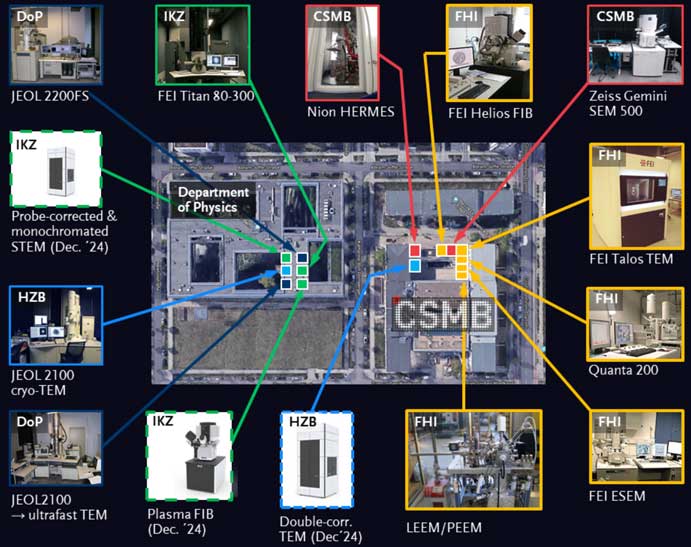 Within BeAM a number of advanced microscopy techniques are available that are enabled by (scanning) transmission electron microscopes [(S)TEMs] and scanning probe microscopes [SPM]. For some techniques, there exists a dedicated instrument, and some techniques are available on multiple instruments, albeit with different parameters (e.g. spatial or spectral resolution).
Within BeAM a number of advanced microscopy techniques are available that are enabled by (scanning) transmission electron microscopes [(S)TEMs] and scanning probe microscopes [SPM]. For some techniques, there exists a dedicated instrument, and some techniques are available on multiple instruments, albeit with different parameters (e.g. spatial or spectral resolution).
GenFab
Generative manufacturing processes for hybrid components

Since August 2018, the HZB-group of Prof. Eva Unger and the group of Prof. Dr. Emil List-Kratochvil from the Humboldt-Universität zu Berlin, have cooperated on the long-term project “Generative manufacturing processes for hybrid components” (GenFab).
They develop large scale (opto)electronic devices, printed solar cells and components fabricated by printing and solution-based methods from hybrid materials: from transparent conductive electrodes to memory devices, transistors, light-emitting diodes, solar cells and sensor applications.
To enforce the synergy between their research groups, they decided to establish a new jointly used lab space for GenFab based in the CSMB research building.
Platzhalter
Subtitle
Enter info box description
JRL Cat
Joint Research Laboratory for Catalysis
 The Helmholtz-Zentrum Berlin (HZB) and Humboldt-Universität zu Berlin (HU) have partnered to establish a cutting-edge catalysis laboratory within our research building in Adlershof. We provide ideal conditions for advancing research on catalysts, essential for sustainable technologies like “green” hydrogen production.
The Helmholtz-Zentrum Berlin (HZB) and Humboldt-Universität zu Berlin (HU) have partnered to establish a cutting-edge catalysis laboratory within our research building in Adlershof. We provide ideal conditions for advancing research on catalysts, essential for sustainable technologies like “green” hydrogen production.
This collaboration fosters interdisciplinary innovation, leveraging thin-film technologies, additive manufacturing, and nanostructuring methods to develop energy materials. With its unique setup and focus on integration, CSMB strengthens Berlin’s position as a leader in catalysis research.
HySPRINT
Hybrid Silicon Perovskite Research, Integration & Novel Technologies
 HySPRINT is a cooperation platform for industry with a focus on (opto)electronic materials and devices at an early technological stage of development.
HySPRINT is a cooperation platform for industry with a focus on (opto)electronic materials and devices at an early technological stage of development.
Notable achievements include the development of record-breaking perovskite/silicon tandem solar cells and the spin-off of QYB Quantum Yield Berlin.
As one of sixteen Helmholtz Innovation Labs, HySPRINT is a technology transfer instrument supported by the Helmholtz Association. It is also a member of the HZB CoreLabs, HEMF (Helmholtz Energy Materials Foundry), and a partner of the Cluster Energy Technology Berlin Brandenburg.
Berlin-Adlershof Center for Advanced Microscopy
Joint Labs with HZB & FHI at HU Physics for Electron & Scanning Probe Microscopies
 Within BeAM a number of advanced microscopy techniques are available that are enabled by (scanning) transmission electron microscopes [(S)TEMs] and scanning probe microscopes [SPM]. For some techniques, there exists a dedicated instrument, and some techniques are available on multiple instruments, albeit with different parameters (e.g. spatial or spectral resolution).
Within BeAM a number of advanced microscopy techniques are available that are enabled by (scanning) transmission electron microscopes [(S)TEMs] and scanning probe microscopes [SPM]. For some techniques, there exists a dedicated instrument, and some techniques are available on multiple instruments, albeit with different parameters (e.g. spatial or spectral resolution).
GenFab
Generative manufacturing processes for hybrid components

Since August 2018, the HZB-group of Prof. Eva Unger and the group of Prof. Dr. Emil List-Kratochvil from the Humboldt-Universität zu Berlin, have cooperated on the long-term project “Generative manufacturing processes for hybrid components” (GenFab).
They develop large scale (opto)electronic devices, printed solar cells and components fabricated by printing and solution-based methods from hybrid materials: from transparent conductive electrodes to memory devices, transistors, light-emitting diodes, solar cells and sensor applications.
To enforce the synergy between their research groups, they decided to establish a new jointly used lab space for GenFab based in the CSMB research building.
Platzhalter
Subtitle
Enter info box description

